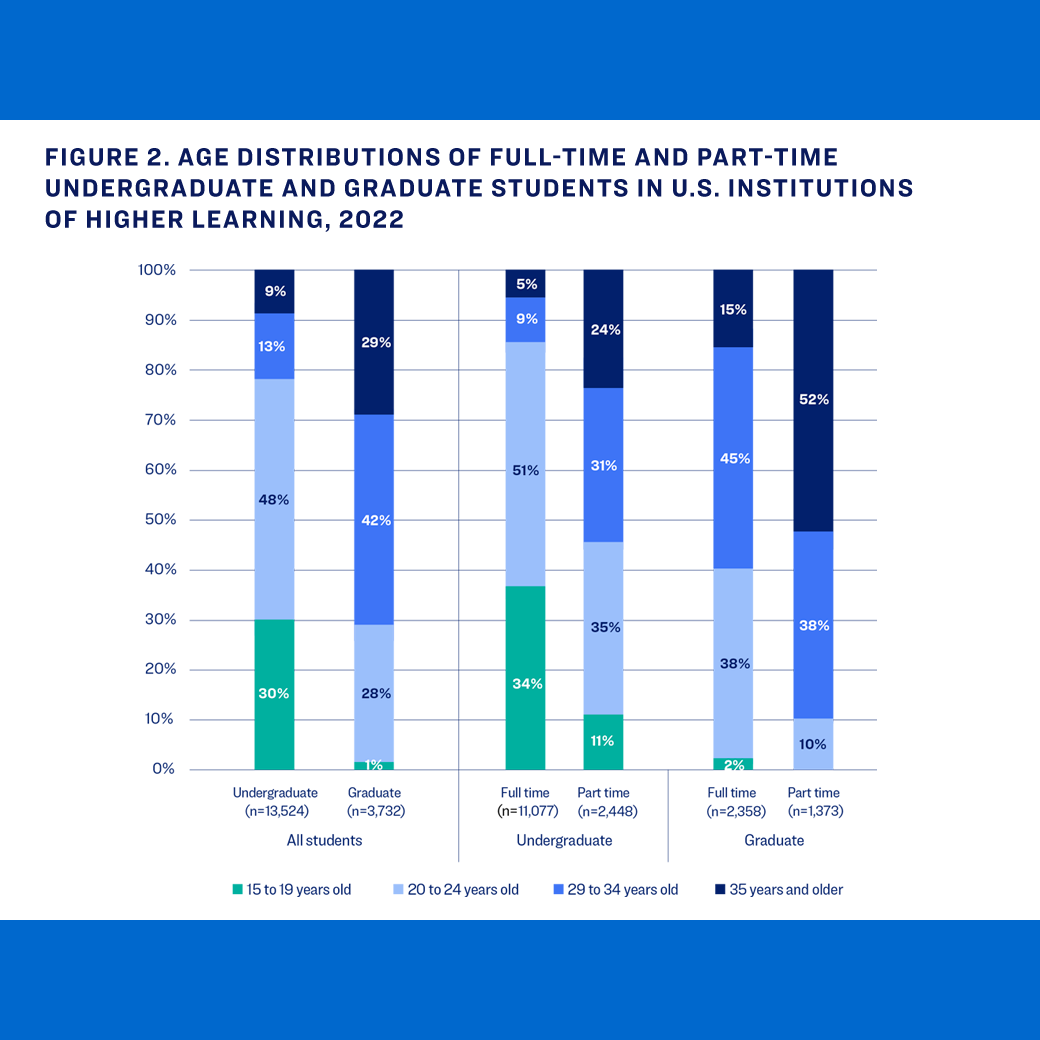How can colleges and universities best support older Americans who want to keep working—or just experience the joys of lifelong learning?
Summary
Adults age 65 and older will soon outnumber younger people in the U.S. population, and with more years to fill, Americans are working longer, pursuing second acts later in life, and updating their skills and credentials more frequently. This report, developed with the Gerontological Society of America, examines how academic institutions can maximize these macroeconomic trends and excel in the new era of longevity.
Key Insights
- Age-inclusive universities have many tools for addressing enrollment declines and other challenges they face in today’s climate.
- Even as the size of the traditional college-age population declines, adults need new skills and knowledge as technology changes their careers while creating new opportunities.
- Many older students are seeking graduate education pertaining to AI and other cutting-edge fields. Others are taking courses for personal fulfillment or to prepare for certification examinations.







